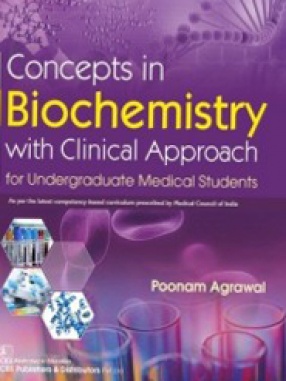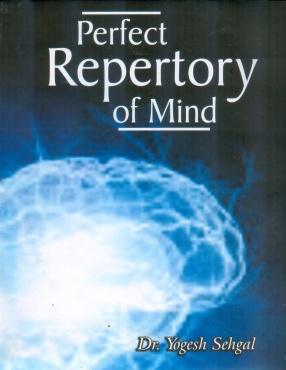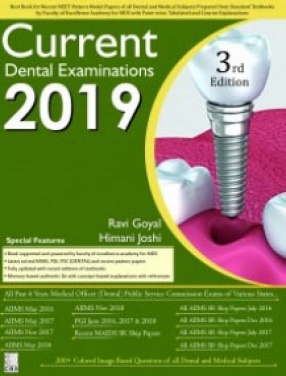Concepts in Biochemistry With Clinical Approach For Undergraduate Medical Students
This book is based on the latest MCI guidelines on competency based medical education. The book is written in simple and lucid language explaining the concepts through a concise and clinical approach. Salient Features: Based on latest MCI guidelines on Competency-based Medical Education (CBME) for Indian Medical Graduate Simple and lucid language for faster grasping of key concepts of the topics Concise and clinical approach to the subject Diagrams and flowcharts have a clear visual impact Long essay |short essay questions and MCQs added at the end of the chapters.
Contents: Foreword. Preface. I. Cell and its Biomolecules: 1. Cell and its Organelles. 2. Enzymes. 3. Carbohydrates and their Chemistry. 4. Amino Acids and their Chemistry. 5. Lipids and their Chemistry. II. Proteins, membrane and extracellular matrix: 6. Proteins: Structure and Properties. 7. Plasma Membrane. 8. Plasma Proteins. 9. Extracellular Matrix (ECM). 10. Intracellular Protein Sorting. III. Metabolism of Carbohydrates: 11. Carbohydrate Metabolism I: Metabolism of Glucose. 12. Carbohydrate Metabolism II: Metabolism of Other Carbohydrates. III. Metabolism of lipids: 13. Lipid Metabolism I: Fatty Acid Synthesis. 14. Oxidation of Fatty Acid. 15. Ketone Body: Synthesis and Utilization. 16. Eicosanoids and Compound Lipids . 17. Metabolism of Cholesterol. 18. Lipoprotein Metabolism. 19. Lipoprotein Disorders. V. Matabolism of Amino Acids: 20. Amino Acid Metabolism I: Overview and Urea Cycle. 21. Amino Acid Metabolism II: Metabolism of Aliphatic Amino Acids. 22. Aromatic Amino Acids. VI. Integrated pathways: 23. TCA Cycle. 24. Metabolic Integration in Various Physiological and Pathological States. 25. Electron Transport Chain (ETC) and Oxidative Phosphorylation.VII. Nurition, Vitamins and Minerals: 26. Nutrition. 27. Water Soluble Vitamins. 28. Fat Soluble Vitamins. 29. Minerals and their Metabolism . VIII. Miscellaneous topics: 30. Water and Electrolyte Balance in Human Body. 31. Organ Function Key (KFT and LFT). IX. Nuclear Acids : Chemistry, Metabolism and Applied Aspects: 32. Nucleotides: Chemistry and their Metabolism. 33. Nucleic Acid I: Structural Organization of DNA and RNA. 34. Nucleic Acid II: DNA Replication (Prokaryotes and Eukaryotes) . 35. Nucleic Acid III: Transcription and Post-Transcriptional Modifications. 36. Nucleic Acid IV: Translation and Post-Translational Modifications. 37. Gene Expression and Regulation . 38. Technologies in Genetics. X. Heme and Hemoproteins: 39. Heme Metabolism. 40. Hemoglobin and Myoglobin. XI. Oxidative Stress and Cancer: 41. Free Radicals. 42. Biotransformation. 43. Cancer Biochemistry. 44. Tumor Marker. Index.
Get it now and save 10%
BECOME A MEMBER







Bibliographic information